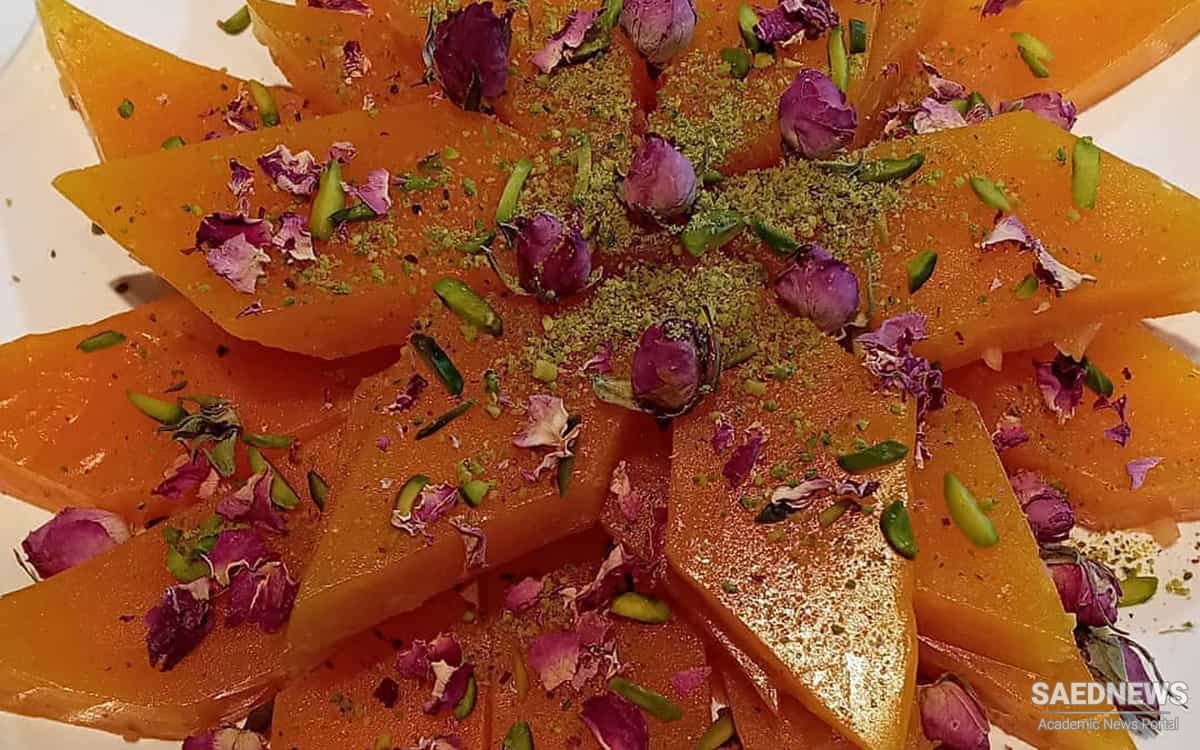The history of Masghati goes back to about 2 centuries ago, at the beginning of the Qajar dynasty. At that time, one of the chiefs of Larestan county (in Fars province) had immigrated to Oman. His grandson used to travel to Oman to visit him. In one of these visits to Muscat, he had learned the recipe of Muscat Halva and brought it back to Iran. Over time many changes were made to the recipe resulting in the new dessert that is Persian Masghati. As you would guess the name Masghati has come from Muscat, the city which this sweet is inspired from.
Masghati is made in many southern cities of Iran like Bandar-Abbas, Booshehr, and Kazeroon. However, Shiraz and Lar are famous for making this sweet.
Masghati-Lari, the sweet made in Lar, is sweeter. It can be made with nuts, rose petals or even coconut powder. The nuts in Masghati-Lari are inside the sweet. On the other hand, Masghati-Shirazi is made without any nuts inside. In Shiraz, it is served alongside Kolooche (a kind of Persian cookie). Kolooche-and-Masghati is a very popular souvenir of Shiraz.

Masghati in other cities of Iran can vary in the amount of nuts added, the elasticity or even the main ingredients. Some Iranians do not use saffron to make this dessert, while others may even add more ingredients such as milk or fresh juices.
Masghati is a gluten-free sweet. It is also a good choice for vegetarians. Saffron in the sweet is believed to bring delight, therefore it’s good for reducing stress and anxiety.
The thing to remember is that this Persian dessert is made with a great amount of sugar, so it’s better for people with diabetes to avoid it.
The main ingredient for making Masghati is starch. Saffron, sugar, and butter are other basic ingredients. Rosewater is also used in the traditional recipe. Using Cardamom is optional and it gives the sweet a special taste and aroma.
To design Masghati, you can rose petals, shredded coconut, and nuts. Pistachios and almonds are the most common nuts for garnish, but you can use any other nut that you desire.
The process of making Masghati is long and takes about 3 hours.
The first step is to dissolve the starch in cold water and then sieve the mixture.
In a pan, mix the water and sugar and let it heat. After it starts to boil, add the starch mixture and put it on medium heat. At this time you should stir the mixture every few minutes for even baking until it starts to thicken.
After about 2 hours, the mixture starts to thicken and you can add the bloomed saffron and nuts. Keep stirring as the rigidity increases. Close to the end of the process, add butter and rosewater and let it boil for another 20 minutes until the mixture forms like dough and can be separated from the pan.
Then remove from the heat and before it cools down, pour it in a greased tray. It should not be more than 1 inch thick. Let it completely cool in the fridge for a few hours. Then slice the Masghati and serve it.
Traditional Persian Masghati is usually sliced in rhomboid shapes. Depending on the region you are in, you can have this sweet with or without cookies.
Note: adding nuts is desirable. You can combine the nuts in the mixture or use them to design the sweet.
Cardamom is also optional. If you want to add cardamom add it the same time you mix saffron.


 Persian Yellow Pudding the Sweet Sense of Life
Persian Yellow Pudding the Sweet Sense of Life














































